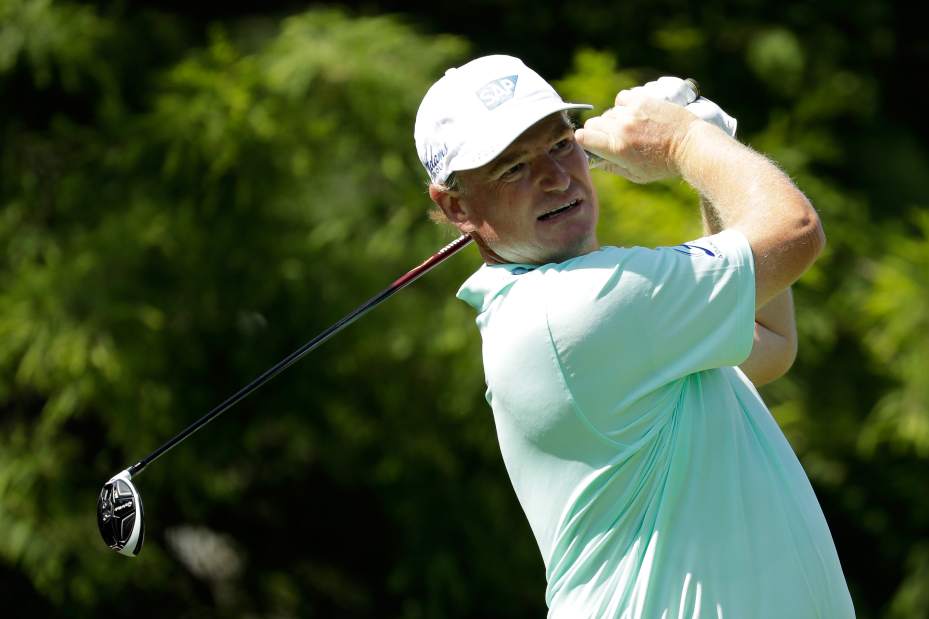Former champion Els expects more mature Oakmont
DUBLIN, Ohio – Ernie Els couldn't believe his eyes when he arrived at Oakmont Country Club in 2007. It wasn't the same golf course he smartly navigated en route to winning his first U.S. Open title in 1994.
The trees he used as sight lines were gone. There were significant changes aesthetically, including the addition of a few strategically placed bunkers which figured prominently in Angel Cabrera's eventual 5-over par winning score.
Ultimately, the South African labored throughout, finishing a distant 51st — 16 shots in arrears.
“When I went there the second time, I almost didn't recognize the golf course,” Els said last week during the Memorial Tournament. “I think very recent before that event, it had a big kind of a face lift, if you want to call it that. They put a lot of new bunkers in and they took a lot of trees out.
“So down the first hole, there were no fairway bunkers in '94, and when we got there in '07, there were bunkers right and left. They did that on quite a few of the golf holes. They completely renovated No. 17. They elevated the green up, put those deep bunkers around the green.
“So that all completely changed,” he added. “And just the pure — just looking at it from the clubhouse down and not seeing too many trees — I thought it was a tree-lined golf course when I played there in ‘94, and when I got there, it was really open. So it was quite a shocking change to me.”
Oakmont, which will host the national championship for a record ninth time this week, has a few more changes this time around — albeit slight.
Still, what is unchanged is the complexity of a championship venue that will penalize wayward shots. Again, it will demand premium iron play and impeccable course management.
Els, who won his second U.S. Open title at Congressional in 1997, expects the par-70, 7,219-yard layout to be just as difficult as it was nine years ago when only six golfers cracked 10-over. Moreover, he's convinced storied Oakmont has matured into the course the USGA imagined in 2007.
“I felt that the course wasn't quite grown in in 2007, to be honest,” Els said. “So I wasn't a great fan of it. I have spoken to (head professional Bob) Ford and ... members up there, and I have not been up there. Although they made me a member, I have not had time to go up there, but I hear it's really much better this year.
“The changes have been grown in. They've had the mowers in there for quite a few years now, almost 10 years again. So I think we're going to have a very different feel for the golf course. I feel it's going to have that feel of it's been here for a while now. It's not this very dramatic change in the golf course.”
A year ago, Els was among the many golfers protesting that Chambers Bay was an atypical Open venue. It had the look and feel of a British Open course. The greens were bumpy and unpredictable, which proved a decisive factor on the 72nd hole as Dustin Johnson three-putted to gift-wrap the championship for Jordan Spieth.
“I wasn't the greatest of fans the way things were set up, absolutely dry and burnt out, but it was a challenge playing,” Els said. “I wouldn't call it unfair, either. I think that the greens, the way the greens were running, I was not a fan of that. I felt that the poa annua, because we're so close to the ocean there, the poa annua was still alive, so to speak, and when you have that, you have a very uneven roll.
“It's nice playing those kinds of courses, but my favorites are the old classic northeastern courses — Oakmont, Winged Foot, Congressional, you name it. Up here, that's the way I remember U.S. Opens.”
“We're going to an old classic U.S. Open that's been proven through the years,” Els said of Oakmont. “It's just a classic, great test, and I think we're going to have the same kind of thing this year.”
Ralph N. Paulk is a Tribune-Review staff writer. Reach him at rpaulk@tribweb.com or via Twitter @RalphPaulk_Trib.

